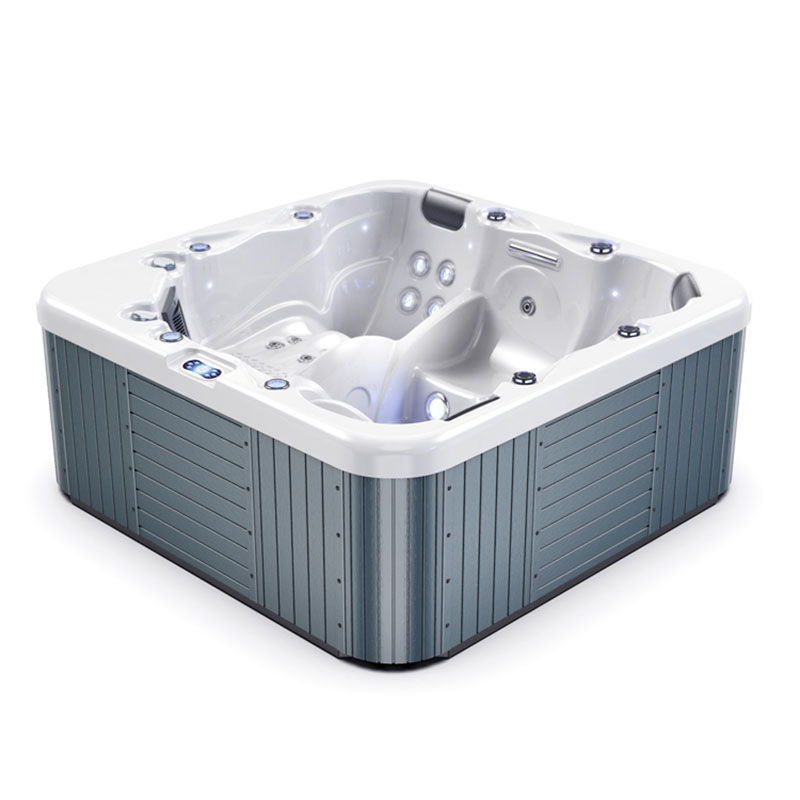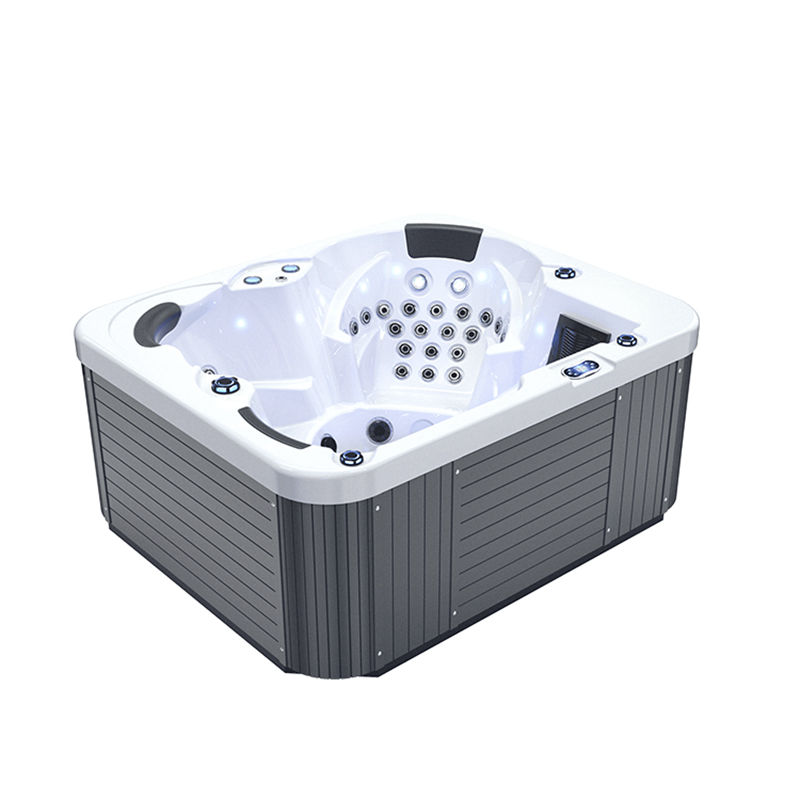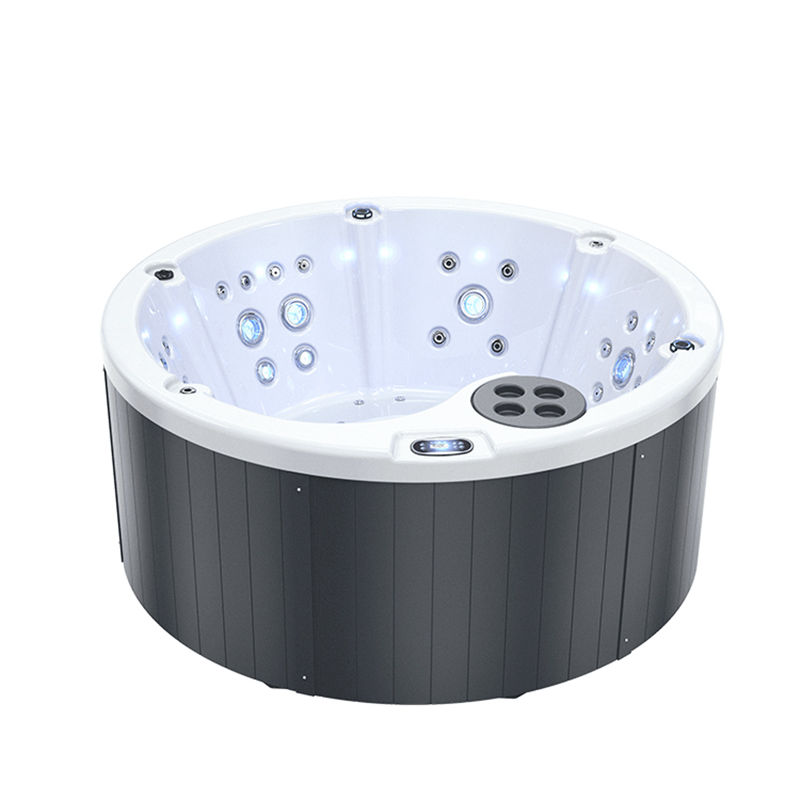Whirlpool spa hot tubs are popular for their comfortable massage and warming properties. Whether used at home or in a high-end hotel, whirlpool spa hot tubs can help relieve muscle soreness, relax, and improve blood circulation.
However, many people experience dizziness, fatigue, and even mild nausea after a whirlpool spa hot tub soak, a confusing and worrying experience.
This article will provide an in-depth analysis of the physiological mechanisms, usage instructions, risk factors, and scientific precautions to help users safely enjoy the comfort of a whirlpool spa hot tub.
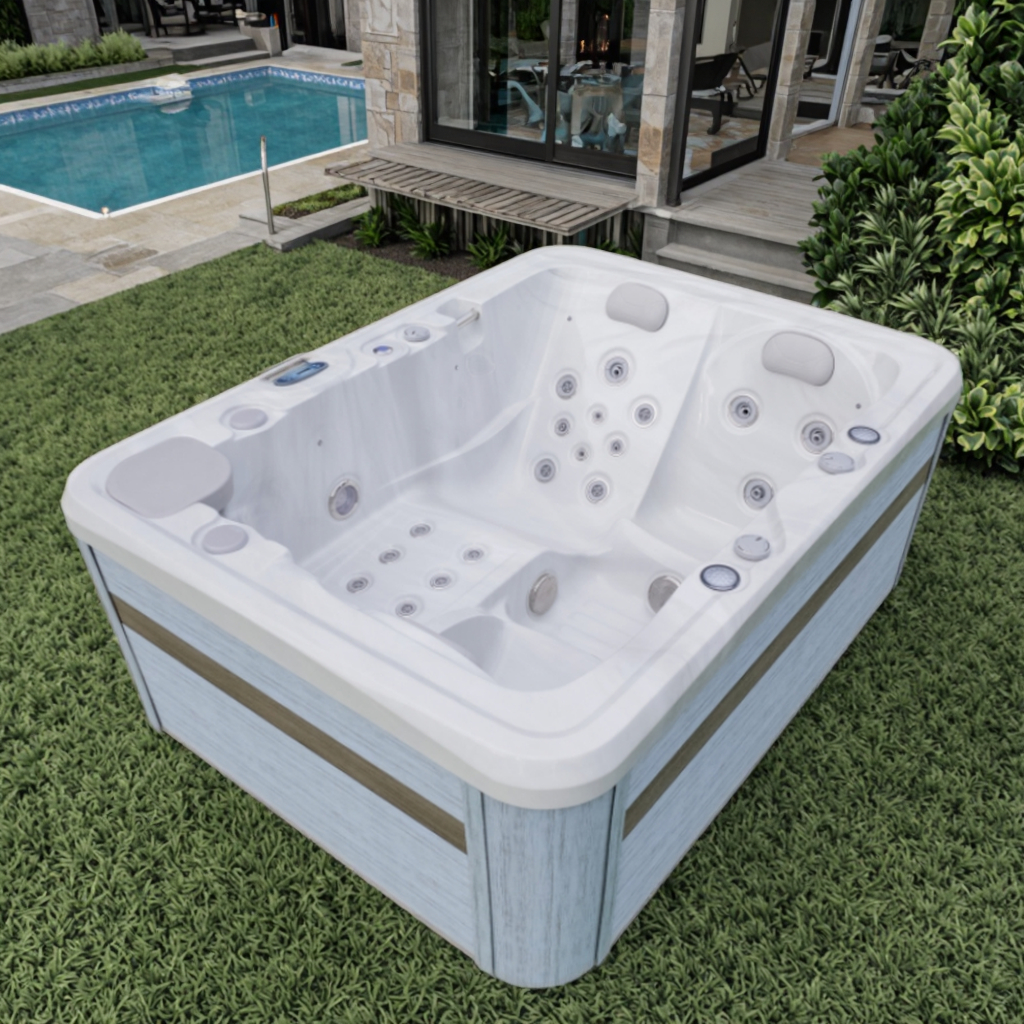
What are the benefits of a whirlpool spa hot tub for the human body?
Whirlpool spa hot tubs are not only a leisure tool; they also offer certain physiological benefits. Understanding their effects on the body can help us understand the causes of dizziness after a bath. The main benefits are as follows:
1. Improved Blood Circulation
• Hot water dilates blood vessels on the surface of the skin, increasing blood flow to the extremities and skin surface, thereby helping muscles and joints receive more oxygen and nutrients.
• Water jets and bubble massage can also stimulate blood flow and improve circulation efficiency.
• While this redistribution of blood flow can relieve muscle soreness, if prolonged, it can cause a temporary lack of blood supply to the brain, leading to dizziness.
2. Relieve Muscle and Joint Stress
• The buoyancy of a whirlpool spa hot tub reduces joint stress and relieves muscle tension.
• Jet massage can effectively relax stiff muscles in the back, neck, and waist, improving flexibility.
• However, excessive use of high-intensity jets or prolonged bathing can irritate the nervous system, causing discomfort after the water temperature change.
3. Psychological Relaxation and Stress Relief
• Hot water and massage can reduce sympathetic nervous system activity, putting the body in a relaxed state.
• This soothing effect is particularly noticeable for those experiencing excessive stress or chronic tension, but excessive immersion can over-suppress or fatigue the nervous system, leading to dizziness after bathing.
4. Body Temperature Regulation and Sweat Metabolism
• Hot water baths raise core body temperature, stimulate sweat glands to release sweat, and aid in fluid metabolism.
• At the same time, sweat loss removes a large amount of water. If you don't replenish water promptly, it can lead to a decrease in blood volume, causing dizziness or fatigue.
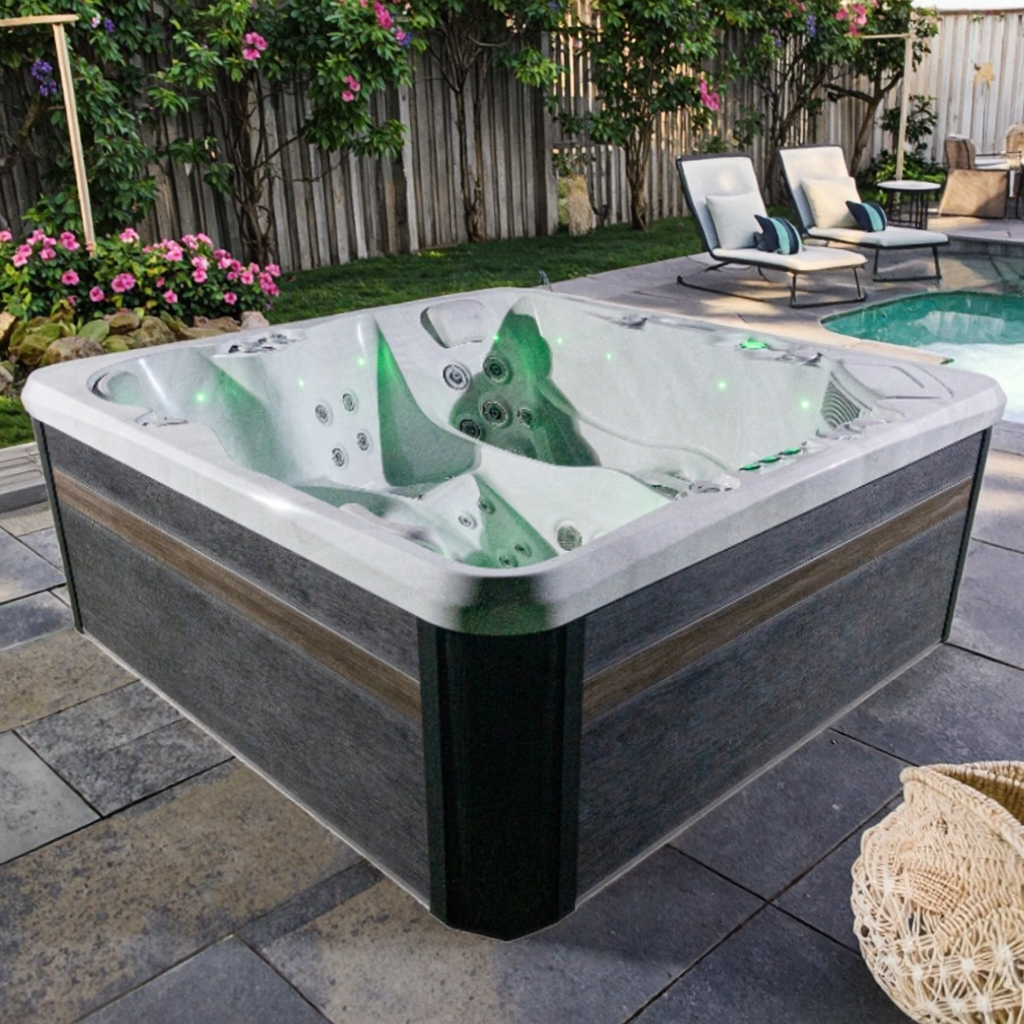
Why do you feel dizzy after a whirlpool spa hot tub bath?
Dizziness is a common symptom after a hot tub bath, and it involves a variety of physiological reactions and environmental factors:
1. Blood Pressure Fluctuations
• Hot water dilates blood vessels: Blood flows away from core organs to the skin and extremities, causing a temporary drop in blood pressure.
• Insufficient blood supply to the brain: A drop in blood pressure can temporarily deprive the brain of oxygen, causing dizziness, blackouts, or palpitations.
• Orthostatic hypotension: Standing up suddenly after a bath can worsen the drop in blood pressure, especially for people with low blood pressure.
2. Dehydration and Electrolyte Loss
• Hot water stimulates sweat glands, accelerating water evaporation.
• Prolonged soaking or failure to replenish water promptly can lead to a decrease in blood volume and electrolyte imbalances.
• Mild dehydration can affect blood flow to brain cells and nerve signaling, causing dizziness, fatigue, and even mild nausea.
3. High Temperatures Stimulate the Nervous System
• Hot water temperatures are generally between 37 and 40°C (111-124°F), and some bathtubs can be even higher.
• High temperatures may affect the balance between the sympathetic and parasympathetic nervous systems, leading to vasodilation and changes in heart rate.
• Temporary changes in cerebral blood flow can cause dizziness, vertigo, or temporary loss of concentration.
4. Prolonged Soaking Causes Blood to Sink
• Water pressure and gravity cause blood to remain concentrated in the lower extremities and on the surface of the skin for an extended period.
• Blood returns to the heart more slowly, resulting in insufficient blood supply to the brain, which may cause mild dizziness and weakness.
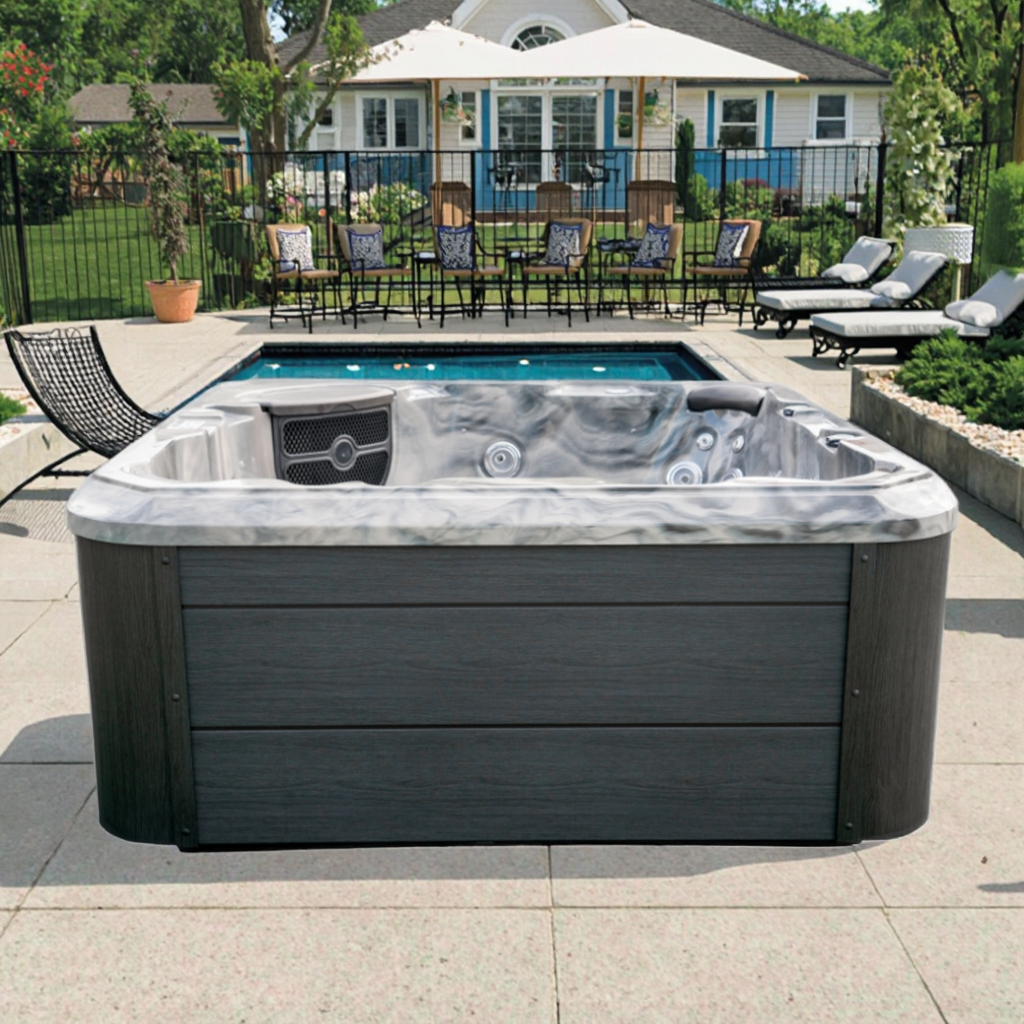
Who is more likely to experience dizziness after soaking in a whirlpool, spa, or hot tub?
Not everyone will experience dizziness; certain groups are at higher risk:
1. People with Low Blood Pressure
• Soaking in hot water may further lower those with low blood pressure.
• They are more likely to experience symptoms of orthostatic hypotension, such as dizziness when standing up, blurred vision, or palpitations.
2. People with Cardiovascular Disease
• People with impaired heart function or poor vascular elasticity experience increased cardiac stress when soaking in hot water.
• The stimulation of hot water may cause irregular heartbeats or temporary blood flow deprivation, increasing the risk of dizziness.
3. The Elderly
• Their vascular elasticity is reduced, weakening their ability to regulate blood pressure.
• They are more sensitive to temperature changes and are more likely to experience dizziness, fatigue, and even falls after prolonged soaking.
4. Pregnant Women
• High temperatures may affect placental blood flow and maternal circulation.
• Pregnant women should control the temperature and duration of their baths and only take them under the guidance of a doctor.
5. People with Dehydration or Post-Exercise Fatigue
• Those with low blood volume will experience increased dehydration from soaking in hot water.
• Electrolyte loss after exercise can lead to dizziness, palpitations, or fatigue.
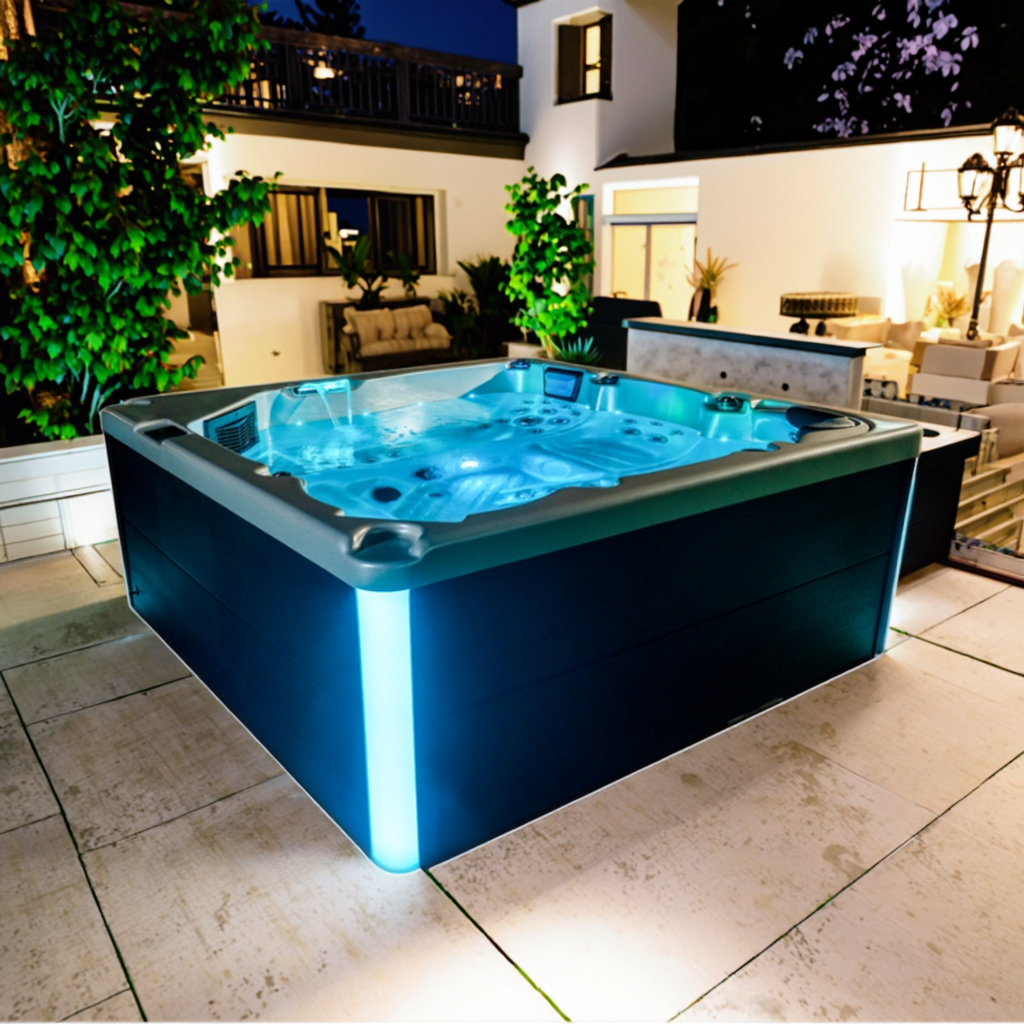
Does the method of use affect dizziness after bathing?
Dizziness after bathing in a whirlpool spa hot tub is largely related to the method of use. The following are common mistakes and correct ways to do it:
1. Using too high a water temperature or bathing for too long
• Water temperatures exceeding 40°C or soaking for more than 40 minutes can worsen blood pressure fluctuations, dehydration, and nervous system irritation.
• Correct way: Keep the water temperature between 37°C and 40°C, and the bathing time should be 20-30 minutes, adjusting according to your tolerance.
2. Standing up suddenly or leaving the bathtub quickly
• Hot water concentrates blood in the lower extremities, resulting in insufficient blood flow to the brain when standing suddenly.
• Correct way: Sit on the edge of the bathtub for 1-2 minutes after the bath, then slowly stand up.
3. Not hydrating promptly
• Hot water promotes sweating, and not replenishing fluids and electrolytes can easily cause dizziness.
• Correct way: Drink plenty of water before and after bathing, and choose beverages containing electrolytes to help replenish fluids.
4. Bathing on an empty stomach or after drinking alcohol
• Bathing on an empty stomach can lower blood sugar and worsen symptoms of hypotension.
• Alcohol dilates blood vessels and affects the central nervous system, increasing the risk of dizziness.
• Corrective measures: Eat a small, easily digestible meal before bathing, and avoid alcohol.
How to scientifically prevent dizziness after a whirlpool spa hot tub soak?
1. Control water temperature and bathing time
• The ideal water temperature is 37-40°C. If it's above 40°C, shorten the soaking time.
• Each bath should last 20-40 minutes, adjusting the duration based on personal tolerance.
2. Gradually exit the tub
• After bathing, sit on the edge of the tub for 1-2 minutes to promote blood circulation.
• Avoid sudden standing or rapid movements.
3. Maintain adequate hydration and electrolyte intake
• Drink water before and after bathing to maintain blood volume and fluid balance.
• Choose light salt water or sports drinks to help replenish electrolytes such as sodium and potassium.
4. Adjust the intensity of the whirlpool spa hot tub massage
• High-intensity jets or prolonged massage can stimulate the nervous system and worsen dizziness.
• Choose appropriate jet pressure and massage time based on your tolerance.
5. Pay attention to your physical condition
• People with low blood pressure, heart disease, pregnant women, and the elderly should bathe under a doctor's supervision.
• High-risk individuals can shorten bathing time, lower the water temperature, and monitor their physical condition at all times.
How to deal with dizziness after a whirlpool spa hot tub bath
• Sit or lie down: This helps restore blood circulation and reduce the risk of falls.
• Replenish fluids and electrolytes: Drinking plenty of water or light salt water can relieve dizziness caused by dehydration.
• Breathe deeply: Slow, deep breaths increase oxygen supply and promote blood circulation.
• Lower the water temperature or stop the massage: If you are still using the whirlpool spa hot tub, immediately turn off the jets or lower the water temperature.
• Rest if necessary: If dizziness persists or is accompanied by palpitations or nausea, stop bathing immediately and rest quietly or in bed. Seek medical attention if necessary.
Are your spas suitable for both residential and commercial use?
Yes. Lovia Spa manufactures a wide range of products suitable for family homes, luxury resorts, hotels, and wellness centers. Our spa hot tubs and swim spas are engineered with high quality pumps, durable acrylic shells, and long-lasting structural warranties.
Wholesale buyers, suppliers, and retailers trust our company to deliver reliable products at competitive prices. With customized design options and flexible purchasing solutions, our factory is ready to supply both small-scale and large-scale projects globally.


